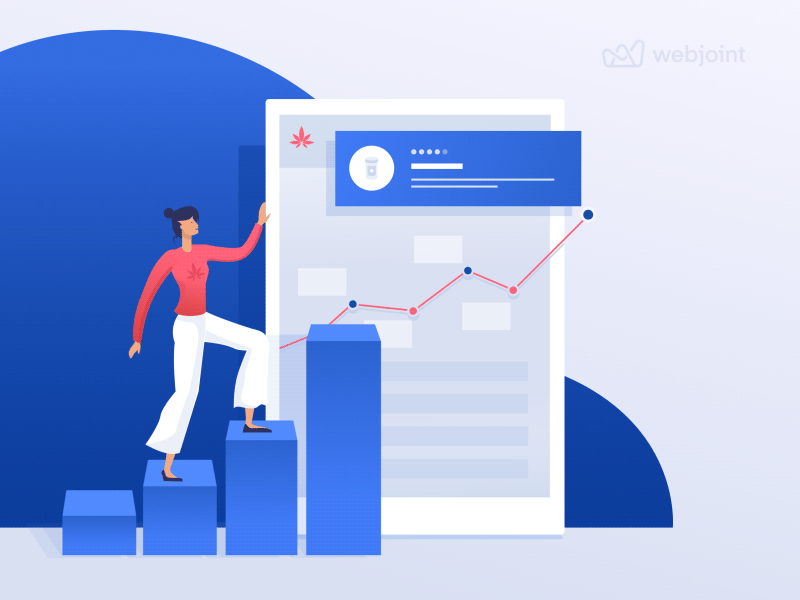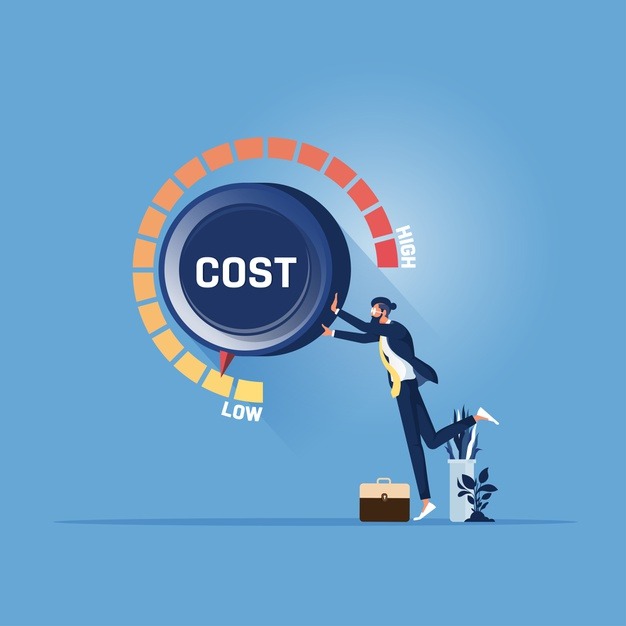
Maximize Profits and Motivate People:
Taking this expert-supported course allows you to deliver significant savings and build a cost advantage by applying five proven strategies. The training focuses on identifying costs that can be eliminated without negatively affecting your customers and business. The cost reduction training is result-oriented, helps managers and functional specialists to create measurable results in cost reduction and profit improvement. Watch the video to see how the five cost reduction strategies can help making your business more profitable and competitive
➤ Dynamic
➤ Interactive
➤ 100% online
➤ Result-oriented
➤ Toolkit included
➤ Trainer supported
➤ Zero-based design
➤ Cost driver analysis
➤ Practical case study

Why reducing costs?
Shrinking bottom lines and declining profit margins force organizations to find ways to minimize costs without impacting product and service quality. This training program enables participants to develop skills in formulating a cost minimization strategy by applying proven strategies and tactics. It also provides the toolkit for analyzing costs across the value chain, so activities and processes can be redesigned to improve productivity and profitability. By taking this course you will apply the latest techniques for cost management and learn from practical examples from both manufacturing and service sector. And finally, you will develop the cost reduction roadmap based on the concepts learned.
What is cost reduction?
Cost reduction is a planned positive approach to reduce expenditure to ensure profitability of a business. Goal is achieving a real and permanent reduction in the unit cost of goods manufactured or services rendered without compromising quality. An effective cost reduction permanently increases productivity and business effectiveness through improvements in methods and structure. But making cuts without careful planning might even destroy a business by cutting in the wrong places. There are three questions you should ask yourself:
➤ Do I really know the cost drivers?
➤ Which costs are good, which bad?
➤ What are the effects of making cuts?

Want to double profits?
➤ To double profitability, you have essentially two options: either double sales or Cut Costs by a small amount. Let’s say your current revenue is $100M and costs total $92M, leaving you $8M in earnings before taxes, depreciation, and amortization (EBITDA). By cutting costs by just 8.7%, from $92M to $84M, profits will double from $8M to 16M, without any capital expenditure, without making a single extra product, without acquiring a single new customer, and without hiring new employees or entering new markets, and without taking on new risks – just by using what you already have in a more effective way.
What will you learn?
By taking the cost reduction course you will learn the proven strategies, tools, and tactics to double profitability, perhaps even more, triple or quadruple them, when starting from a low baseline. It allows you to identify items and activities that drain cash from the bottom line without adding value to customers and business.
You will learn how to permanently plug those value leaks, so you can accomplish MORE with the SAME resources, or maintain the SAME level of output with FEWER resources.
You will learn about right-sizing service levels and quality requirements to prevent over-processing, striking an optimal quality-to-cost ratio when purchasing materials and external services, eliminating unnecessary items and features, simplifying the manufacturing and service process, and substituting parts and materials without sacrificing the quality of the finished good – those and many other tactics are part of the 5 cost reduction strategies that you will learn to measurably improve profitability.
What is the opportunity?
Continuous Cost Reduction (CCR) is an extremely powerful but underestimated area in business administration and project management. Most companies focus entirely on growth and expansion, and ignore the millions of dollars that leak from the bottom line, caused by defects, delays, and disconnects.
Over the years we worked with manufacturers and service providers from around the world to improve their bottom lines (→ Cost Reduction Program )so we decided to pack best practices into a step-by-step course, so you can replicate successes by cutting wastes and plugging value leaks that lift the bottom line.
You might be wondering, if the potential is that great, why only few companies pursue systematic cost reductions? What we learned is that people fear the repercussions, mistakingly equating cost reduction with headcount reduction.
Even though a reduction of the workforce might be necessary in the short term to level resources to a reduced workload, an effective cost reduction program will always accomplish the opposite long term, improve customer value and Cost Competitiveness, so that the business can grow and employ more people.
Why this course?
There are many online courses available that offer more or less the same thing: videos to watch and an exam to take, so you can download the “certificate of completion”. Our courses are very different. We expect students not only to learn the theory, but also apply best practices to deliver real savings. The course is supported by a cost reduction expert, providing coaching feedback, so you are getting the cost analysis and cost reduction roadmap right. Additionally, you will learn from actual cost reduction cases, apply practical tools and templates to get better results for your customer and organization. Whether you are operating a small family business or a managing a multinational organization, this course will build essential skills for your long term growth and short term effectiveness, while getting certified as a “Cost Reduction Professional”.
Who is this course for?
The course is designed for leaders who want to double profitability through zero-based budgeting and more effective cost management. In essence, the training is for anyone managing people or assets, e.g. an engineering team seeking to reduce maintenance cost while increasing availability of machines, or a sales manager to improve the cost effectiveness of his team, using employee hours in the most profitable way to increase revenue and customer satisfaction.
The cost reduction course helps any business leader to challenge the status quo, looking for inspiration and best practices to reduce costs and become more competitive: “Effect of Cost Control and Cost Reduction Techniques on Organizational Performance”. And finally, the course is for professionals who want to strengthen their skillset and boost their future career by becoming a Cost Reduction Professional.

How to Apply Cost Reduction Strategies and Tactics
For the training to produce real savings, the theory must not only be learned but also actually applied. Students are required to analyze costs in their target areas, using the cost driver tree, and develop the cost reduction roadmap.
An experienced cost reduction expert reviews the analysis and improvement plan, and provides coaching feedback. Outcome is a robust and actionable improvement plan with clearly-defined tasks, milestones, ownership, objectives and key results (OKRs). The following paragraph lists the 68 tactics as part of the 5 cost reduction strategies to measurably improve profitability. For more ideas, read the HBR article: When You’ve Got to Cut Costs – Now!”..
- Demand Management:reducing spend and leveling resources to meet demand, prevent slack and idling.
- Process Efficiency:reducing waste, variability, and inflexibility by applying Lean to maximize value-add.
- Technology Alignment:adjusting configurations and settings to meet requirements at the right quality.
- Organization Agility:building skills, simplifying structure, and flatten the hierarchy to reduce overhead.
- Business Effectiveness:realigning strategy and flexibilizing the business model to evolving market needs.
Demand Management
➤ Demand-driven resource allocation (ROI) to eliminate organizational slack
➤ Bundling activities to reduce labor content
➤ Batch-size alignment to production, distribution, consumption
➤ Volume bundling and category management
➤ Volume shift to best-price supplier
➤ Global sourcing, shift to low cost country (LCC)
➤ Target pricing and price renegotiation
➤ Supplier qualification and second-tier sourcing
➤ Payment terms, accounts payable
➤ Multi-year contracts and life-cycle contracts
➤ Purchasing cooperation and mutualizing (Keiretsu)
➤ Transport optimization by frequency and amount
➤ E-auction tendering
➤ Purchasing controls to prevent maverick buying (bypassing process)

Process Efficiency Tactics
➤ Defect reduction and error-proofing
➤ Process capability (Cp, Cpk)
➤ Availability and reliability of tools and equipment
➤ Overall equipment effectiveness (OEE)
➤ Overall process effectiveness (OPE) for manual processes
➤ Overall factory effectiveness (OFE) for the entire plant
➤ Workload leveling to reduce idling and overload
➤ Quality and service level rationalization
➤ Specification downgrading to prevent over-processing
➤ Process streamlining, complexity reduction, simplification
➤ Standardization (OPL, SLA, SOP)
➤ Modularization and platforming
➤ Shared service center to consolidate back-office work
➤ Make-buy optimization
➤ Lean Transformation
Technology Alignment Tactics
➤ Inventory adjustment by risk and velocity
➤ Business-driven capex allocation (ROI)
➤ Decisions based on total cost of ownership (TOC)
➤ Rationalization of support and maintenance activities
➤ Consolidation of facilities, right-sizing capacity to demand
➤ Process and technology harmonization
➤ System supplier development
➤ Early customer involvement, joint development programs
➤ Concept competition
➤ Concurrent engineering
➤ Design for manufacturing and assembly (DFMA)
➤ Robotic process automation (RPA)
➤ Consignment warehousing
➤ Vendor-managed inventory (VMI)
➤ System redesign based on technical benchmarking
Organisational Agility Tactics
➤ Rightsizing staff
➤ Re-alignment based on contributions (BVA)
➤ Job design based on requirement analysis
➤ Job profile and pay level harmonization
➤ Joint development with supplier
➤ Centralization of support functions
➤ Roles and responsibilities standardization
➤ Streamlining of reporting
➤ Flatten hierarchy, reduction of layers, increasing spans
➤ Consolidation of duplicate organizations
➤ Incentive scheme optimization
➤ Organizational redesign based on benchmarking
➤ Tighten bonus, tougher targets, reduced pay-out
➤ Shift from full-time to part-time or contractor
Business Effectiveness Tactics
➤ Evolving the business model
➤ Value-driven business proposition, altering company value-add
➤ Centralized versus decentralized control
➤ Outsourcing of non-core manufacturing and service activities
➤ Collaboration groups (Keiretsu)
➤ Business scope shift
➤ Business model realignment
➤ Footprint rationalization
➤ Joint ventures for scalability
➤ Acquisitions for greater control
➤ Rationalize product and service portfolios

Take the Cost Reduction Course, Deliver Savings, Get Certified
➤ Learn how to systematically reduce costs and improve profitability
➤ Analyze current cost structure using logic tree and cost-profit bridge
➤ Identify cost drivers and improvement levers to deliver quick savings
➤ Download Excel templates for cost analysis and roadmap development
➤ Develop an effective cost reduction framework based on 5 key strategies
➤ Strategies cover demand, process, technology, organization, business
➤ Prioritize cost improvement opportunities, using the value-effort matrix
➤ Develop a detailed cost savings plan; derive key actions from 68 tactics
➤ Learn from case studies: service firm, manufacturer, mining company
➤ To succeed, you need to allocate 5-10 days effort within a 2-month period
➤ Start now and become a certified Cost Reduction Professional
Course Description
➤ Learn how to systematically reduce costs and improve profitability.
➤ Analyze the current cost structure using logic tree and cost-profit bridge.
➤ Identify cost drivers and improvement levers to deliver quick savings.
➤ Download Excel templates for cost analysis and roadmap development.
➤ Develop an effective cost reduction framework based on 5 key strategies.
➤ Strategies cover demand, process, technology, organization, business.
➤ Prioritize cost improvement opportunities, using the value-effort matrix.
➤ Develop a detailed cost savings plan; derive key actions from 68 tactics.
➤ Learn from case studies: service firm, manufacturer, mining company.
➤ To succeed, you need to allocate 5-10 days effort within a 2-month period.
➤ Start now and become a certified Cost Reduction Professional.
